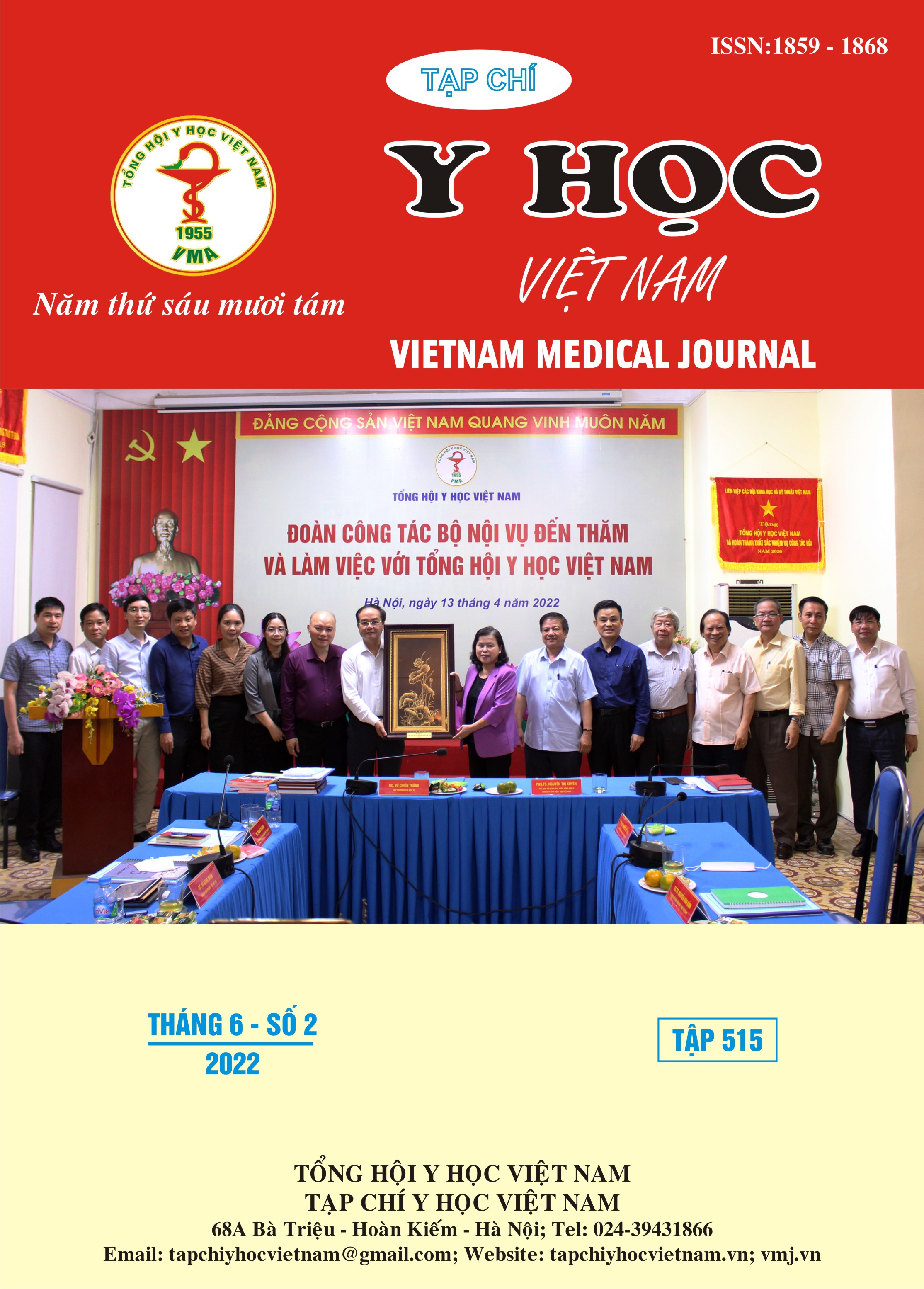CLINICAL AND PARACLINICAL CHARACTERISTICS OF PATIENTS WITH COMPLICATED POLYCYSTIC KIDNEY DISEASE WHO UNDERWENT NEPHRECTOMY
Main Article Content
Abstract
Purpose: To describe several clinical characteristics of patients with complicated polycystic kidney disease who underwent nephrectomy. Subjects and Methods: We conducted a retrospective study on patients with polycystic kidney disease who underwent nephrectomy at the Vietnam-Germany Friendship and Bach Mai Hospitals from January 1, 2015 to December 31, 2018. Results: 26 patients were operated on, including 13 males and 13 females; the mean age was 48.85 ± 9.67 years (26 - 67). The disease lasted 14.08 years (range, 1–37). A family history of polycystic kidney disease and kidney failure were found in 69.2% and 88.5% of the cases, respectively, with one patient receiving a kidney transplant. Low back pain (100%), gross hematuria (57.5%), anemia (92.3%), of which 19.2% was severe anemia, enlarged kidneys (88.5%), and hypertension (100%) are primarily common clinical symptoms. Computed tomography revealed that 100% of cases had enlarged kidneys, with a mean longitudinal size of 21.43cm (12 - 29) and an average renal cyst size of 5.99 cm. Intracystic bleeding and cyst infection were associated with 37.6 % and 21.9% complications, respectively. Conclusion: Clinical features of patients undergoing complicated polycystic kidney surgery usually involve renal failure, hypertension, anemia, hematuria, and enlarged kidneys. Computed tomography is required to determine the morphology and complications of the kidneys.
Article Details
Keywords
Kidney, polycystic kidney, complications, nephrectomy
References
2. Chen K, Tan YG, Tan D. et al (2018). Predictors and outcomes of laparoscopic nephrectomy in autosomal dominant polycystic kidney disease, Investig Clin Urol, 59, pg 238-245.
3. Solazzo A, Giovanella S, Carrera P. et al (2018). The prevalence of autosomal dominant polycystic kidney disease (ADPKD): A meta-analysis of European literature and prevalence evaluation in the Italian province of Modena suggest that ADPKD is a rare and underdiagnosed condition PLoS One, 13(1), pg e0190430.
4. Nguyễn Thị Nga (2013). Tìm hiểu đặc điểm lâm sàng, cận lâm sàng và một số biến chứng của bệnh thận đa nang tại Khoa Thận-tiết niệu Bệnh viện Bạch Mai, Khóa luận tốt nghiệp bác sỹ Y khoa, Trường Đại học Y Hà Nội.
5. Đinh Gia Hưng (2008). Nghiên cứu đặc điểm lâm sàng, cận lâm sàng bệnh thận đa nang bẩm sinh ở người trưởng thành điều trị tại khoa Thận Tiết niệu Bệnh viện Bạch Mai, Luận văn tốt nghiệp bác sỹ chuyên khoa cấp II, Trường Đại học Y Hà Nội.
6. Abraham GP, Siddaiah AT, Das K. et al. (2015). Laparoscopic nephrectomy for autosomal dominant polycystic kidneys in patients with end-stage renal disease on maintenance hemodialysis: 10-year single surgeon experience from an Indian center, J Minim Access Surg, 11(3), pg PMC4499924.
7. Pei Y., Hwang Y.H., Conklin J. et al (2015). Imaging-based diagnosis of autosomal dominant polycystic kidney disease, J Am Soc Nephrol, pg 26:746.
8. Farooq Z., Behzadi A.H., Blumenfeld J.D. et al (2017). Complex liver cysts in Autosomal Dominant Polycystic Kidney Disease, Clin Imaging, 46, pg 98-101.


